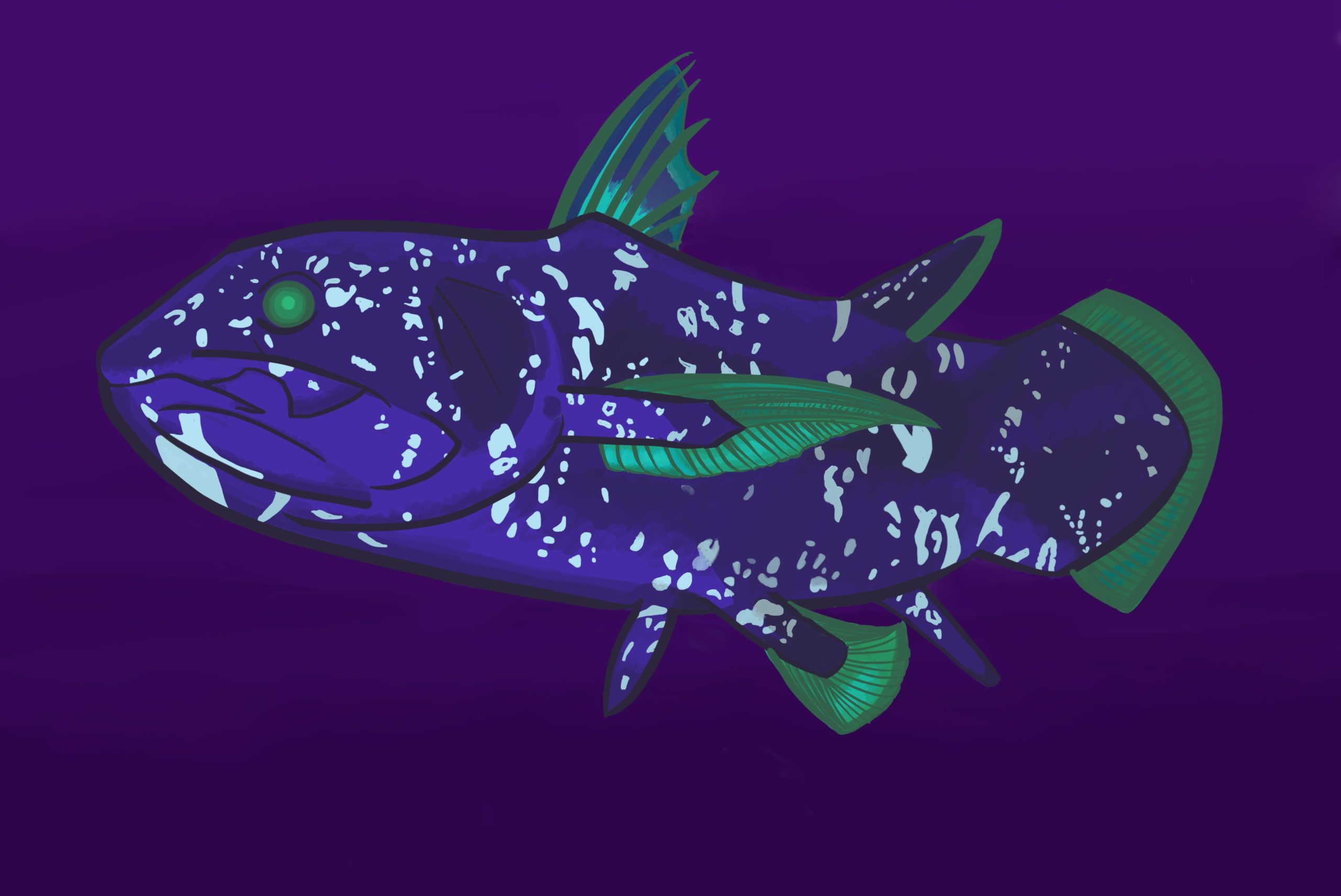2021 Faculty Panel’s Choice Winner – Ari Coester

A Coelacanth’s Revival
Medium: Digital Art
My piece “A Coelacanth’s Revival” is a celebration of an ancient fish that holds many secrets about the evolution of tetrapods, including us. According to the University of Berkeley, coelacanths diverged from tetrapods approximately 420 million to 400 million years ago. This makes coelacanths one of the most closely related animals to tetrapods. By comparing coelacanths’ DNA with DNA of tetrapods, scientists may learn which mutations lead to the evolution of limbs, air-breathing, and other traits that allow tetrapods to conquer land.
Scientists once despaired coelacanths, and any insights that could be learned from studying them, were forever lost. The fish disappeared from the fossil record 65 million years previously and was believed to be extinct (Shattuck and Lichtman). But in 1938, a fisherman in South Africa pulled up a strange fish and gave it to the curator of the local museum, Marjorie Courtenay Latimer (Shattuck and Lichtman). She knew it was extraordinary and had it taxidermied immediately (Shattuck and Lichtman). When she asked a local ichthyologist to examine it, he instantly knew it was a coelacanth (Shattuck and Lichtman). They weren’t extinct after all; the mysteries hidden in their behavior and their bodies could still be discovered.
Scientists are still trying to understand coelacanths. They live deep in the ocean off the East Africa and Indonesian coasts, rarely traversed regions. Their life history is basically unknown. Their genome has barely been decoded. These fish incite scientific curiosity. There is so much to learn about them, so much we can learn about other tetrapods’, and our own, evolution through them.
But deeper than even my scientific curiosity is my awe that this strange, beautiful animal has remained basically unchanged since before our ancestors left the oceans. In a time plagued by economic instability, environmental devastation, and global pandemic, the coelacanth is a symbol of survival and hope. This too shall pass, it says with its large, watery eye.
This piece is a tribute to the awe and hope the coelacanth inspires in me. I chose an angle that looks up at the fish to emphasize my awe. I chose to make the fish’s eye the focal point to make viewers meet the fish’s eye in an attempt to create empathy with it. I chose warm greens for the fins and eye to emphasize the miracle of the fish’s survival through millions of years. I chose warm blues for its body to emphasize the calm and hope the coelancanth’s story makes me feel. Finally, I created a purple background to hint at all its unsolved mysteries. When viewers see this fish, I hope they will want to learn more about the coelacanth and that through that knowledge will gain both scientific curiosity and hope.
